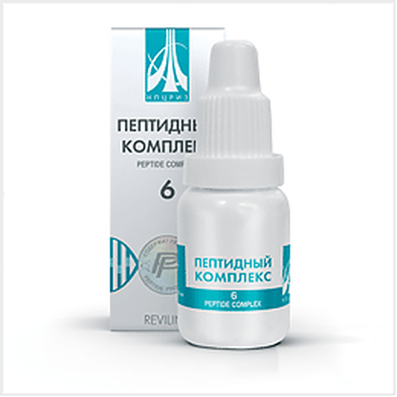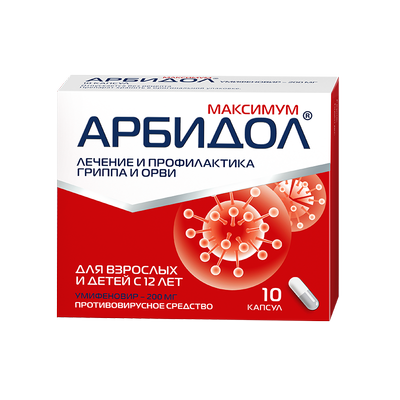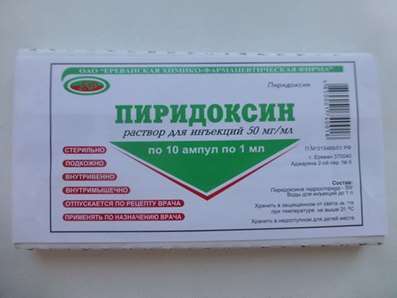Instruction for use: Montelukast
I want this, give me price
The Latin name of the substance Montelukast
Montelukastum (genus. Montelukasti)
Chemical name
1 - [[[(R) -M - [(E) -2- (7-Chloro-2-quinolyl) vinyl] -alpha- [O- (1-hydroxy-1-methylethyl) phenethyl] benzyl] thio] Methyl] cyclopropaneacetic acid (as sodium salt)
Gross formula
C35H36ClNO3S
Pharmacological group:
Prostaglandins, thromboxanes, leukotrienes and their antagonists
The nosological classification (ICD-10)
J30 Vasomotor and allergic rhinitis: Allergic rhinopathy; Allergic rhinosinusopathy; Allergic diseases of the upper respiratory tract; Allergic rhinitis; Allergic rhinitis seasonal; Vasomotor runny nose; Prolonged allergic rhinitis; All-year-round allergic rhinitis; All-year allergic rhinitis; Year-round or seasonal allergic rhinitis; All-the-year-round rhinitis of an allergic nature; Rhinitis vasomotor allergic; Exacerbation of pollinosis in the form of rhinoconjunctival syndrome; Acute allergic rhinitis; Edema of the nasal mucosa; Edema of the nasal mucosa; Edema of the mucous membrane of the nasal cavity; Swelling of the nasal mucosa; Swelling of the nasal mucosa; Pollinosis; Permanent allergic rhinitis; Rhinoconjunctivitis; Rhinosinusitis; Rhinosinusopathy; Seasonal allergic rhinitis; Seasonal allergic rhinitis; Hay rhinitis; Chronic allergic rhinitis; Allergic diseases of the respiratory tract
J45 Asthma: Asthma of physical effort; Asthmatic conditions; Bronchial asthma; Bronchial asthma of light course; Bronchial asthma with difficulty in sputum discharge; Bronchial asthma of severe course; Bronchial asthma physical effort; Hypersecretory asthma; The hormone-dependent form of bronchial asthma; Curbing asthma attacks with bronchial asthma; Non-allergic bronchial asthma; Night Asthma; Exacerbation of bronchial asthma; Attack of bronchial asthma; Endogenous forms of asthma; Night attacks of asthma; Cough with bronchial asthma
CAS Code
158966-92-8
Characteristics of substance Montelukast
Montelukast sodium is a hygroscopic, optically active, white or almost white powder. Easily soluble in ethanol, methanol and water; Practically insoluble in acetonitrile. Molecular weight 608.18.
Pharmacology
Pharmacological action - bronchodilator.
Selectively blocks leukotriene receptors. Specifically inhibits CysLT1 receptors of cysteinyl leukotrienes (LTC4, LTD4 and LTE4) - the most powerful mediators of chronic persistent inflammation, supporting bronchial hyperreactivity in bronchial asthma.
When ingested quickly and fairly fully absorbed: Cmax achieved after 2-3 hours Bioavailability is 64-73%. In the blood, 99% is bound to proteins. Metabolised in the liver. It is excreted mainly with bile. Plasma Cl is 45 ml / min.
Reduces the severity of spasm of smooth muscles of bronchioles and vessels, edema, migration of eosinophils and macrophages; Reduces the secretion of mucus and improves mucociliary transport. Highly active when ingested. Bronchodilator effect develops within one day and persists for a long time.
Update of information
Carcinogenicity, mutagenicity, effects on fertility
When montelukast was administered through the gastric tube, rats of the Sprague-Dawley line were not oncogenic for two years at a dose of 200 mg / kg per day, and mice for 92 weeks at a dose of 100 mg / kg per day. The calculated exposure of montelukast in rats exceeded approximately 120 and 75 times, in mice - at 45 and 25 times the AUC values at the maximum admissible daily dose of montelukast for adults and children, respectively.
According to the microbial assay of mutagenicity, V-79 test using mammalian cells, the method of alkaline elution of DNA using rat hepatocytes, a test aimed at detecting chromosomal aberrations using Chinese hamster ovary cells, the method of accounting for chromosomal aberrations in vivo in bone marrow cells of mice Was found mutagenic and clastogenic activity of montelukast.
Administration of montelukast to female rats orally at a dose of 200 mg / kg per day showed a decrease in fertility and fertility indices. There was no change in fertility and fertility with the administration of montelukast at a dose of 100 mg / kg per day. Montelukast had no effect on the fertility of male rats at a dose exceeding 800 mg / kg per day.
Application of substance Montelukast
Prophylaxis and long-term treatment of bronchial asthma, including the prevention of symptoms of the disease in the day and night, the treatment of bronchial asthma in patients with increased sensitivity to acetylsalicylic acid, the prevention of bronchospasm caused by physical exertion. Catching symptoms of seasonal and persistent allergic rhinitis.
Contraindications
Hypersensitivity, pregnancy, breast-feeding, children's age (up to 6 years).
Application in pregnancy and breastfeeding
The action category for fetus by FDA is B.
Update of information
Teratogenic effects of montelukast according to in vivo data
There were no teratogenic effects when administering montelukast to rats at a dose of 400 mg / kg per day (which exceeded 100 times the AUC for adults at the maximum allowable daily dose of montelukast) and rabbits at a dose of 300 mg / kg per day (which exceeded 110 times the AUC for Adults with the maximum allowable daily dose of Montelukast).
The use of Montelukast during pregnancy
It has been shown that when administered to rabbits and rats, montelukast penetrates through the hematoplacental barrier.
Since sufficient, controlled clinical studies of the safety of use of montelukast during pregnancy in humans have not been carried out, its appointment is possible only in case of emergency.
Additional information on the teratogenicity of Montelukast
The experience of clinical use of montelukast showed the possibility of association of congenital malformations of the limbs in newborns and the reception of montelukast by pregnant women. Most of these women took along with montelukast other drugs for the treatment of bronchial asthma during pregnancy. A reliable connection between the reception of montelukast by pregnant women and the formation of developmental limb defects in newborns has not been established.
The use of montelukast during lactation
According to the results of studies in rats it was shown that montelukast is excreted in breast milk. It is not known whether montelukast penetrates human breast milk. Considering the fact that many drugs are excreted in breast milk, care must be taken when appointing montelukast to lactating women.
Side effects of Montelukast
From the nervous system and sensory organs: unusual vivid dreams, hallucinations, drowsiness, irritability, agitation including aggressive behavior, fatigue, insomnia, paresthesia / hypoesthesia, headache; Very rarely - convulsive seizures.
On the part of the intestine: nausea, vomiting, indigestion, diarrhea, abdominal pain.
From the musculoskeletal system: arthralgia, myalgia, including muscle cramps.
Allergic reactions: anaphylaxis, angioedema, rash, itching, urticaria; Very rarely - eosinophilic liver infiltrates.
Other: a tendency to increase bleeding, the formation of subcutaneous hemorrhages, palpitations, edema, influenza-like syndrome, cough, sinusitis, pharyngitis, increased transaminase levels.
Update of information
The risk of developing thrombocytopenia and liver damage (postmarketing experience)
In the post-registration there is evidence of probabilities in patients receiving montelukast, thrombocytopenia, and liver dysfunction, hepatitis and jaundice in t. H. Fulminant.
Clinical experience of using Montelukast
The clinical experience with the use of montelukast has revealed the following side effects of Montelukast:
On the part of the nervous system: anxiety, depression, suicidal thoughts and suicidal behavior, tremor.
On the part of the respiratory system: nasal bleeding.
On the part of the digestive tract: very rarely - pancreatitis.
The clinical experience of using montelukast has revealed the following side effects of its preparations on the part of the hepatobiliary system: rarely - cholestatic, hepatocellular and mixed forms of hepatitis. Most of these side effects developed with other predisposing factors, such as taking concomitant medications, alcohol abuse, the presence of other forms of hepatitis.
Interaction
Compatible with glucocorticoids (additive effect). Phenobarbital reduces the AUC by 40%.
Update of information
Additional information about the drug interaction of Montelukast
According to the conducted clinical studies, montelukast at recommended doses has no clinically significant effect on the pharmacokinetic profile of drugs such as theophylline, prednisone, prednisolone, combined oral contraceptives (norethisterone 1 mg / ethinyl estradiol 35 ug), terfenadine, and warfarin, digoxin.
Use of montelukast as a companion drug in clinical trials with the broad spectrum of commonly prescribed medications (thyroid hormones, NSAIDs, benzodiazepines, decongestants) did not lead to the development of clinically significant drug interactions. There are no special clinical studies.
The simultaneous use of montelukast with drugs that have the ability to induce the cytochrome P450 system
With a single administration of montelukast in a dose of 10 mg against the background of phenobarbital therapy, AUC of montelukast is reduced by 40%. Recommendations for correction of doses of Montelukast are absent. There expediency adequate clinical observation of the patient, on a background which is obtained montelukast therapy drugs having the ability to induce the cytochrome P450 system, such as phenobarbital, rifampin.
Simultaneous use of montelukast with drugs that have the ability to inhibit the cytochrome P450 system
Montelukast is a potential inhibitor of the cytochrome P450 2C8 isoenzyme system according to in vitro data. Clinical studies, while the use of montelukast and rosiglitazone (a representative of drugs primarily metabolized with the participation of isoenzyme CYP2C8) in 12 healthy volunteers revealed no changes in the pharmacokinetic profile of rosiglitazone, which is not possible to confirm the inhibition of montelukast isoenzyme CYP2C8 in vivo. Thus, it can be assumed that montelukast has no effect on the pharmacokinetic profile of drugs metabolized with the participation of this isoenzyme (such as paclitaxel, rosiglitazone and repaglinide).
Routes of administration
Inside.
Precautions for the substance Montelukast
It is necessary to strictly observe the treatment regimen. It is recommended to continue receiving after significant improvement. Do not use to relieve acute asthmatic attacks (does not replace inhaled bronchodilators); With the appearance of a therapeutic effect (usually after the first dose), the number of inhalations of bronchodilators during the day can be reduced.
Update of information
The use of montelukast in elderly patients
Among the patients who took part in the clinical studies of montelukast, 3.5% were over 65 years old, and 0.4% - over 75 years old. At the same time, there were no clinically significant differences in the efficacy of montelukast in older patients and young patients. The experience of the clinical use of montelukast, which has existed up to the present time, also did not reveal any significant differences in the response to therapy of older persons and young patients. It should be noted that the pharmacokinetic profile and bioavailability of montelukast with a single oral dose of 10 mg are similar in elderly and younger patients. However, T1 / 2 montelukast is slightly higher in elderly patients. Correction of the regimen for receiving montelukast in older patients is not required.
The use of montelukast in patients with impaired liver function
In patients with hepatic insufficiency of mild and moderate severity and clinical manifestations of cirrhosis, montelukast is metabolized more slowly, while AUC increases by 41% with single administration of montelukast at a dose of 10 mg. Elimination slightly slows down compared with healthy individuals (T1 / 2 = 7.4 hours). Correction of the dose of montelukast to patients with hepatic insufficiency of mild and moderate severity is not required. Peculiarities of pharmacokinetic behavior of montelukast in patients with more severe impairment of liver function, as well as in patients with hepatitis, have not been studied.
The use of montelukast in patients with impaired renal function
Since montelukast and its metabolites are not excreted in the urine, the features of pharmacokinetics of montelukast in patients with renal insufficiency have not been studied. Correction of the dose of the drug in these patients is not required.
The use of Montelukast for acute attacks of bronchial asthma
It is not recommended to use Montelukast for stopping brochospasm in acute attacks of bronchial asthma, including asthmatic status. In such cases, the patient should be prescribed appropriate drug therapy. In this case, therapy with Montelukast can be continued in cases of exacerbation of bronchial asthma. For emergency relief of an attack of bronchial asthma that has developed due to physical exertion, patients should have inhaled forms of beta-adrenoreceptor agonists of short duration.
Decreased doses of glucocorticosteroids against the background of therapy with montelukast
Against the background of therapy with montelukast, the dose of inhalation forms of glucocorticosteroids can be gradually reduced under the supervision of a doctor. In this case, it is not recommended to sharply replace them with inhalation and oral forms of glucocorticosteroids.
The use of montelukast in patients with hypersensitivity to acetylsalicylic acid
Patients with hypersensitivity to acetylsalicylic acid should continue to avoid her admission, as well as taking other NSAIDs during therapy with Montelukast. Despite the fact that montelukast effectively improves the ventilating capacity of respiratory organs in asthmatic patients with hypersensitivity to acetylsalicylic acid, it has not been shown to be effective against the relief of the bronchoconstrictor effect of acetylsalicylic acid and other NSAIDs in these patients.
The risk of developing in patients with bronchial asthma receiving montelukast, systemic eosinophilia
In rare cases, patients with bronchial asthma receiving montelukast developed systemic eosinophilia, sometimes accompanied by a clinical picture of systemic vasculitis, corresponding to the syndrome Cherdz-Strauss - a condition that often requires systemic administration of glucocorticosteroids. It is noted that the development of this menacing state often, though not in all cases, was preceded by a decrease in the doses of oral forms of glucocorticosteroids. Specialists should carefully consider the appearance of symptoms such as systemic eosinophilia, hemorrhagic eruptions (corresponding to vasculitic-purple type of bleeding), impairment of respiratory function, cardiac complaints, complaints related to neuropathy in patients taking Monelukast. At the same time, it should be noted that there is no reliable causal relationship between the administration of montelukast and the development of these pathological conditions.
The use of montelukast in patients with phenylketonuria
Patients suffering from phenylketonuria should be informed of the content of phenylalanine (in the form of aspartame) at doses of 0.674 and 0.842 mg in montelukast chewing tablets 4 mg and 5 mg, respectively.
Related information
Safety and efficacy of montelukast in children
The safety and efficacy of montelukast in children with bronchial asthma from 6 to 14 years are well studied in controlled clinical trials. Profiles of safety and efficacy are similar in this group of patients and in adults.
Based on the conducted controlled clinical studies in children 6 years and older with bronchial asthma, a conclusion was made about the safety of chewable tablets of montelukast in a dose of 4 mg in children from 2 to 5 years with bronchial asthma. The evidence for the extrapolation was evidence of the similarity of the pharmacokinetics of montelukast in these patient groups. It also took into account the assumption that the pathophysiological mechanisms, the course of the disease, the response to drug therapy are essentially similar in the group of children 2-5 years old and in patients 6 years and older.
Safety and efficacy of montelukast in children
Data on the efficacy of montelukast for the treatment of seasonal allergic rhinitis in children 2 to 14 years old, as well as the permanent form of allergic rhinitis in children 6 months-14 years old, were obtained by extrapolating the results of studies performed with patients aged 15 years and older with allergic rhinitis. In this case, it was assumed that the pathophysiological mechanisms, the course of the disease, and the response to drug therapy in these patient groups are essentially similar.
The safety of chewable tablets of montelukast in a dose of 4 and 5 mg in children 2-14 years with allergic rhinitis is established on the basis of the results obtained in the clinical studies of montelukast in children with bronchial asthma of this age group.
Safety and efficacy of montelukast in children
Based on the conducted controlled clinical studies in children 6 years and older with bronchial asthma, a conclusion was made about the safety of chewable tablets of montelukast in a dose of 4 mg in children from 2 to 5 years with bronchial asthma. The evidence for the extrapolation was evidence of the similarity of the pharmacokinetics of montelukast in these patient groups. It also took into account the assumption that the pathophysiological mechanisms, the course of the disease, the response to drug therapy are essentially similar in the group of children 2-5 years old and in patients 6 years and older.
Safety and efficacy of montelukast in children
The safety of Montelukast pellets at a dose of 4 mg for oral administration in children 12-23 months with bronchial asthma was demonstrated in a double-blind, placebo-controlled clinical trial involving 172 children of this age group, 124 of whom received montelukast for 6 weeks. Conclusion on the effectiveness of montelukast in children 12-23 months is made on the basis of data obtained in patients with bronchial asthma 6 years and older by extrapolation. The data on the similarity of the pharmacokinetic parameters of montelukast, in particular the AUC values, as well as the generality of the pathophysiological mechanisms, the course of the disease, the response to drug therapy in these patient groups were taken into account.
Safety and efficacy of montelukast in children
The safety and effectiveness of montelukast in children less than a year with bronchial asthma, and children younger than 6 months with a constant form of allergic rhinitis has not been studied.

 Cart
Cart





